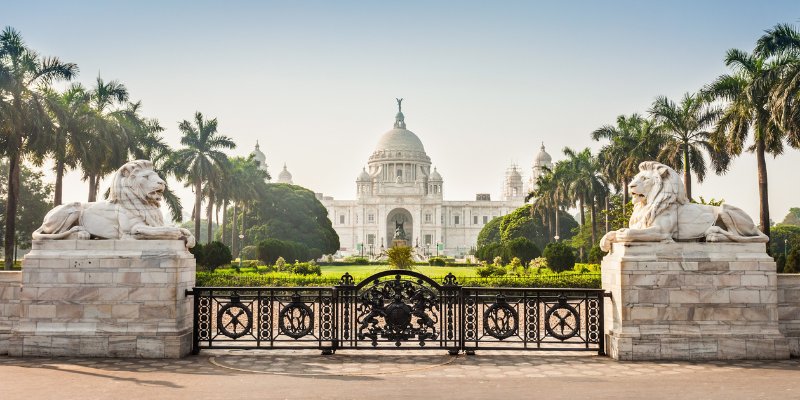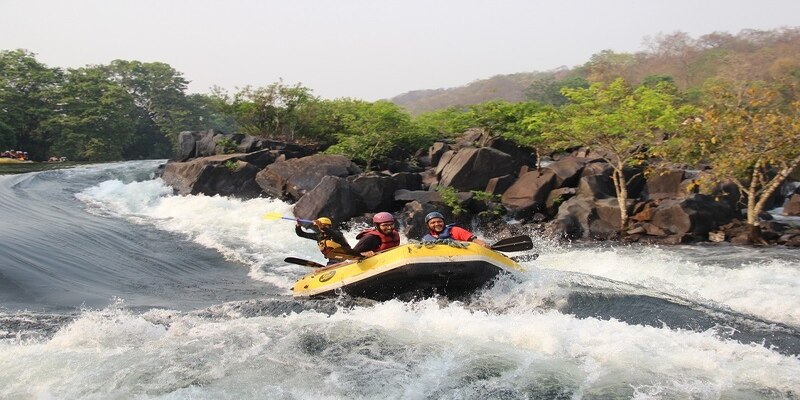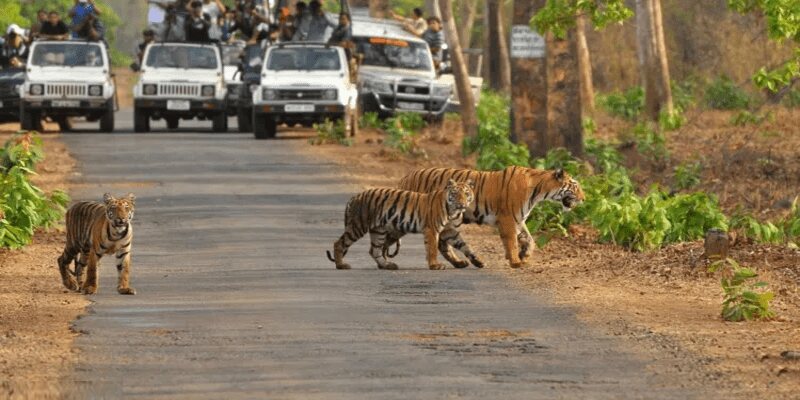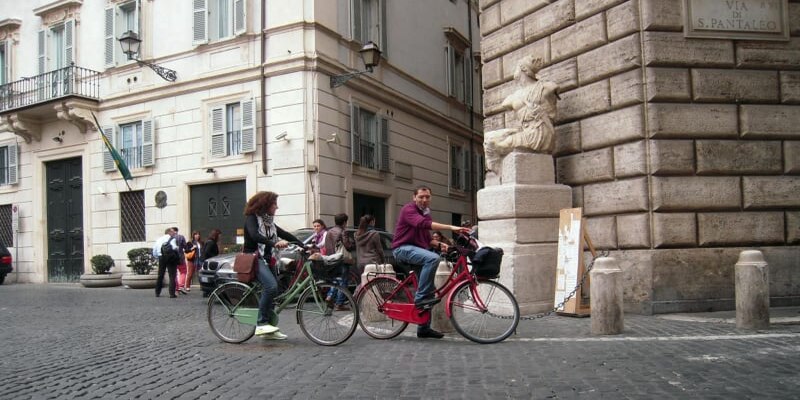Due to its colonial heritage and lively traditions, Kolkata, the "City of Joy," has a rich history and culture. The city, formerly Calcutta, has seen essential events in India's history, making it a popular tourist destination. Streets and monuments in Kolkata recall intellectual and political revolutions that influenced the country. We tour Kolkata's most significant historical sites, each contributing to its own story and cultural vitality.
Kolkata's history is deepened by its time as British India's capital until 1911. The city's cultural, intellectual, and political activities prepared the country for independence. We'll discover Kolkata's colonial heritage and cultural diversity as we explore its historical sites.
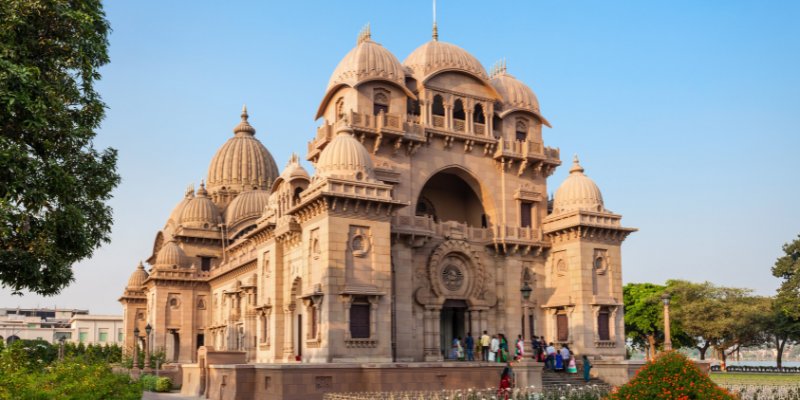
Victoria Memorial:
Kolkata's crown jewel, the Victoria Memorial, honors its colonial past. Established in 1921 in honor of Queen Victoria, this Indo-Saracenic-British masterpiece blends styles. Elegant statues and lush gardens enhance its royal appearance. The Victoria Memorial, near the Maidan, is a living reminder of the British Raj's grandeur in Kolkata.
The monument houses historical artifacts, paintings, and sculptures from Kolkata's colonial history among beautiful vegetation. These artifacts reflect a time of cultural blending and imperial power. The Victoria Memorial offers a peaceful place to explore from 10 AM to 5 PM. One can experience Kolkata's rich and complicated colonial past as one walks through its halls and gardens.
Howrah Bridge:
The Howrah Bridge, a Hooghly River engineering masterpiece, symbolizes Kolkata's resilience and culture. Since 1943, this magnificent bridge has connected Kolkata's busy sector to Howrah's. Its gigantic size, elaborate lattice girders, and cantilevered form make it a visual marvel, especially at night when it glows with lights. The bridge connects Kolkata and symbolizes its resilience, vitality, and constant mobility.
The Howrah Bridge, with its central location, is accessible by road and rail, making it part of Kolkata's complex transportation network. The bridge's accessibility symbolizes Kolkata's constant mobility and activity. Even though the bridge has no opening hours, it's part of Kolkata. See the Howrah Bridge at sunset and experience Kolkata's cultural identity and spirit. Locals and visitors can appreciate the city's architectural marvel and the vibrancy it brings to daily life.
Marble Palace:
The Marble Palace, nestled in North Kolkata's history, invites tourists to relive a period of wealth and cultural patronage—the Neoclassical and Bengali styles of this 1835 Raja Rajendra Mullick-commissioned building blend Western and Indian aesthetics. Not only is the Marble Palace beautiful, but its vast collection of Western sculptures, Victorian furniture, and rare artworks tells a tale of creative confluence and cultural interaction.
A rare combination of Western splendor and local artistry, the palace showcases Kolkata's rich cultural past. Visitors may relive the colonial Bengali elite's lifestyle in this historical landmark's opulent halls with rare artifacts and lush gardens. With its history and fine antiques, the Marble Palace draws visitors into the luxurious lifestyle of a bygone age, enabling them to enjoy Kolkata's aristocratic splendor.
Indian Museum:
Kolkata's Indian Museum, one of the country's oldest and most significant, offers a comprehensive tour of India's cultural and scientific past. The 1814-founded museum collects archaeology, anthropology, geology, and art. Grand architecture makes the museum appealing. At Chowringhee Road, the Indian Museum displays artifacts from many times and places. Look into the museum collections and discover more about India's diverse past via sculptures, paintings, and artifacts.
Before tourists join the museum, they see artifacts from archaeological studies, anthropology at earth science, and art. Sculptures, paintings, can you, and artifacts spanning various Indian periods are in the galleries. All exhibits provide a different tale about the subcontinent's culture and history. In addition to preserving India's cultural and scientific heritage, the Indian Museum educates visitors. From 10 AM to five o'clock in the evening, the museum welcomes guests to immerse in India's rich history, providing a meaningful and fascinating atmosphere.
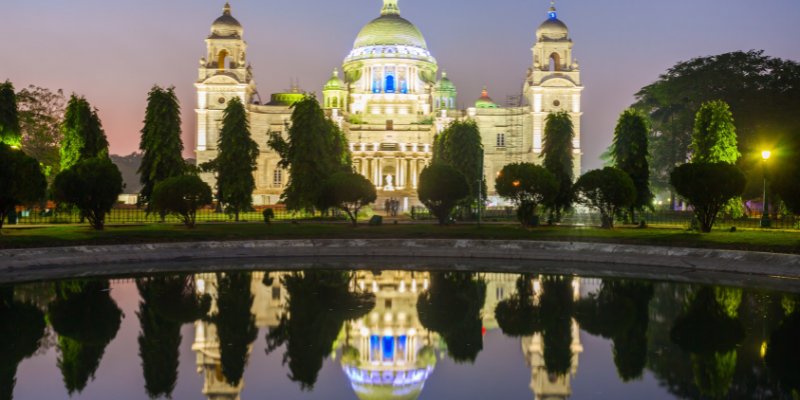
Dakshineswar Kali Temple:
Dakshineswar Kali Temple, on Kolkata's eastern Hooghly River bank, is a famous pilgrimage place and architectural wonder. This Kali temple was built by Rani Rashmoni in 1855. Navaratna architecture and 12 identical spires make the temple seem majestic. Several deity temples and a vast courtyard make up the compound. The spiritual atmosphere and elaborate festival ceremonies draw pilgrims and tourists to Dakshineswar Kali Temple. Devotees may pray or admire the temple's architecture from daylight to night.
The Dakshineswar Kali Temple is a cultural symbol of Kolkata's spirituality. The temple is a peaceful refuge from the city due to its riverfront location. Visitors trek to Dakshineswar across the Vivekananda Bridge, connecting with the divine and experiencing Kolkata's culture.
Writers' Building:
The Writers' Building in Kolkata's center is a colonial remnant. Building in 1777 under Warren Hastings, it was the British East India Company authors' headquarters. The Neo-Gothic and Baroque architecture gives the structure a unique look. Administrative decisions and political movements have occurred at the Writers' Building. With government offices, it remains an essential element of Kolkata's organizational environment.
The widely accessible Writers' Building in B.B.D. Bagh (previously Dalhousie Square) showcases Kolkata's colonial past. While its interior is usually closed, the building's façade silently witnesses the city's growth. The Writers' Building is a hub of activity when examining Kolkata's administrative and historical past.
Once holidaymakers enter the museum, they see artifacts from the archaeological study, anthropology, earth science, and art. Sculptures, paintings, and artifacts from various Indian periods are in the galleries. All exhibits provide a different tale about the subcontinent's culture and history. In addition to preserving India's cultural and scientific heritage, the Indian Museum educates visitors. Open from 10 AM to 5 PM, the museum welcomes visitors to immerse themselves in India's rich history, providing a meaningful and fascinating experience.
Conclusion:
Furthermore, Mumbai's historical sites give an exciting insight into the city's historical events, from colonial pomp to spiritual devotion. Howrah Bridge connects Kolkata's past and present, while Victoria Memorial symbolizes its colonial past. The Marble Palace combines Western and Indian styles, while the Indian Museum houses a variety of cultures. Writers' Building remembers Kolkata's colonial past, while Dakshineswar Kali Temple offers spiritual refuge.
Each area enriches Kolkata's culture with its own story and architectural beauty. These historical sites are more than a trip through time—they reveal the "City of Joy." As they walk the streets and monuments, tourists become part of Kolkata's history and beauty.

